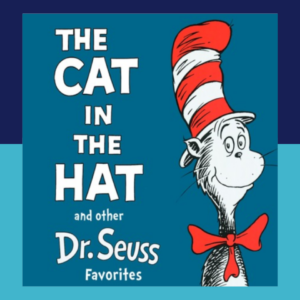Walter Disney
20th century Hollywood gave the world many enduring cultural figures, but few remain as well known today as Walt Disney.
55 years after his death this animator, film producer, and entrepreneur remains a towering cultural icon in the US and around the world. And the company that bears his name continues to delight audiences with a uniquely American brand of popular entertainment. He is truly one of the great cultural ambassadors of the 20th century.
Walter Elias Disney was born in Chicago Illinois on December 5th, 1901. At the age of four his family moved to a farm in Marceline, a rural town in Missouri. Disney’s experiences growing up in a small town at the turn of the century would have a great influence on his future creative work.
He was obsessed with drawing as a child and took art classes at the Kansas City Art Institute. He lied about his age in order to take part in World War I and was stationed in France as a red cross ambulance driver. Disney drew cartoons on the side of his ambulance to amuse his fellow soldiers. And after the war he began working as a commercial artist in Kansas City.
In 1919 he befriended a fellow artist Ub Iwerks, who would become an important collaborator throughout Disney’s career. Disney decided to try his hand at animation, and he moved to Hollywood in July 1923 at the age of 21.
At the time New York was the center of the cartoon industry, but Disney’s brother Roy was convalescing from tuberculosis in the dry California climate, and together the two brothers eventually founded what would become the Walt Disney company in October of 1923. In July of 1924 Disney convinced Iwerks to move to Los Angeles from Kansas City and join him at the new studio. And together they began to make the cartoons that would ultimately make Disney one of the best-known men in America.
Their first creation was a character called Oswald the Lucky Rabbit. Due to the success of these Oswald films Disney tried to negotiate a higher fee from the film’s producer, Charles Mintz. But Mintz owned the intellectual property rights to the character, and as a result of the dispute Walt lost all the rights to Oswald. He swore that he would never sell the rights to any of his characters again, and luckily so, because his next creation would become the single most successful cartoon character of all time. His name was Mickey Mouse.
In 1927 sound came to the movie industry with the success of “The Jazz Singer”. Disney decided that Mickey’s debut cartoon would include this new technology. The resulting picture, “Steamboat Willie”, was the first sound cartoon in history.
Disney provided Mickey’s voice himself and would continue to do so until 1947. The film was an immediate success and led to international fame for Mickey. His image was licensed to a variety of merchandise, including toys, games, and, most famously, wrist watches. Mickey became the corporate symbol for the Walt Disney company and remain so to this day.
With the success of Mickey Mouse, Disney began a series of sound cartoons known as Silly Symphonies. One of these, “Three Little Pigs”, released in 1933, has been called by media historians the most successful short animation of all time. The film won an Academy Award, and its theme song, “Who’s Afraid of The Big Bad Wolf”, was a hit single and became an optimistic anthem for Americans suffering through the Great Depression.
Tired of producing short films, Disney next released “Snow White and the Seven Dwarfs”, the first ever feature animated film. It cost 1,5 million dollars to produce, over three times its projected budget, and brought a new sense of realism to film animation, Disney used a process called rotoscoping, where a film of live actors is projected onto glass and traced to give a more natural sense of movement. And the movie also used the multi-plane camera, a Disney studio invention that allowed multiple drawings to be placed at varying lengths from the lens, creating a more realistic sense of depth. “Snow White” became the most successful film of 1938, and by 1939 its total gross was 6,5 million dollars, making it the most successful sound film in Hollywood to that date. Disney was awarded an honorary Oscar for “Snow White”, one normal Oscar, accompanied by seven miniature Oscars to represent the seven dwarfs.
The success of “Snow White” ushered in the golden age of Disney studio animation. Over the next two decades Disney continued to produce animated features, such as “Pinocchio”, “Fantasia”, “Bambi”, and “Dumbo” — all now considered classics and still viewed by children and adults to this day.
During World War II, Disney produced animated training films for the military, as well as the 1943 documentary feature “Victory Through Air Power”, a film intended to improve American and Allied morale during the war.
As the studio continued its run of success into the 1950s, Disney began to turn his attention away from filmmaking and towards other ventures. He began to conceive of a new kind of amusement park, one that could provide enjoyment for both children and their parents. He purchased a large plot of land in Anaheim, California, 25 miles south of Los Angeles, and Disneyland opened in July 1955.
The opening ceremonies were watched on television by over 70 million Americans. And after just a month’s operation the park was being visited by 20 000 people a day.
As you enter this timeless land one of these many worlds will open to you:
Fantasyland — the happiest kingdom of them all.
Tomorrowland promise of things to come.
Adventureland — the wonder world of nature’s own realm
Frontierland — tall tales and true from the legendary past.
The park was designed as a set of four themed lands connected by main street USA, a recreation of Disney’s hometown of Marceline, and the entire park was encircled by a narrow-gage version of the railroad that ran by Disney’s childhood home. With the success of Disneyland, Walt moved into producing television programs as well, including now classic shows, such as “The Wonderful World Of Disney” and “The Mickey Mouse Club”.
In the summer of 1959, a special exhibition arose in Sokolniki Park in Moscow. The American National Exhibition was a display of American art, fashion, and merchandise. 3,000 tons of material was sent to Russia for display, and over 3 million Russians attended the exhibition during its six-week run. Disney contributed a 19-minute film entitled “America the Beautiful” that showed various landmarks, accompanied by a soundtrack of patriotic and traditional music. The film was presented in a circular Circarama theater, utilizing an eleven-projector system invented by Ub Iworks, and was one of the most popular attractions at the exhibition.
In 1964, Disney developed four exhibits for the World’s Fair in New York City. The fair was attended by over 51 million visitors over the span of its two-year run, and these attractions were experienced by people from all over the world. Disney engineers invented a process called “Audio-Animatronics” for the fair, with lifelike robots programmed to perform using audio signals encoded on magnetic tape. Two
of these attractions, “It’s A Small World” and “Great Moments with Mr. Lincoln”, were dismantled after the fair and reassembled at Disneyland, where they continue to delight audiences today.
A heavy smoker throughout his life, Disney died of lung cancer on December 16, 1966. Throughout his career he was involved in the creation of 81 feature films, and he holds the record for most Academy Awards received by an individual, winning 22 Oscars from 59 nominations.
His lasting influence on entertainment in the US and throughout the world is undeniable, and the company that bears his name remains the most prominent Hollywood studio even today, distributing the most successful movie franchises in history, including the Marvel Cinematic Universe, Star Wars, and Pixar. Disneyland in California has grown into a network of 12 theme parks worldwide, including attractions in Paris, shanghai, Hong Kong, and Tokyo.
Although Walt Disney made his reputation making simple cartoons, he did more to spread American cultural values than perhaps any other figure of the 20th century. The extent of his lasting cultural influence on America and the world cannot be overstated. His films, theme parks, and exhibitions at international expositions transmitted a uniquely American sense of optimism and joy that is still enjoyed by people throughout the world to this day.








